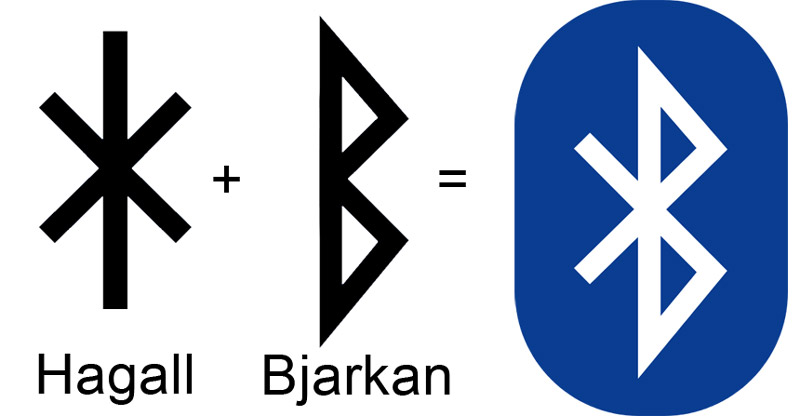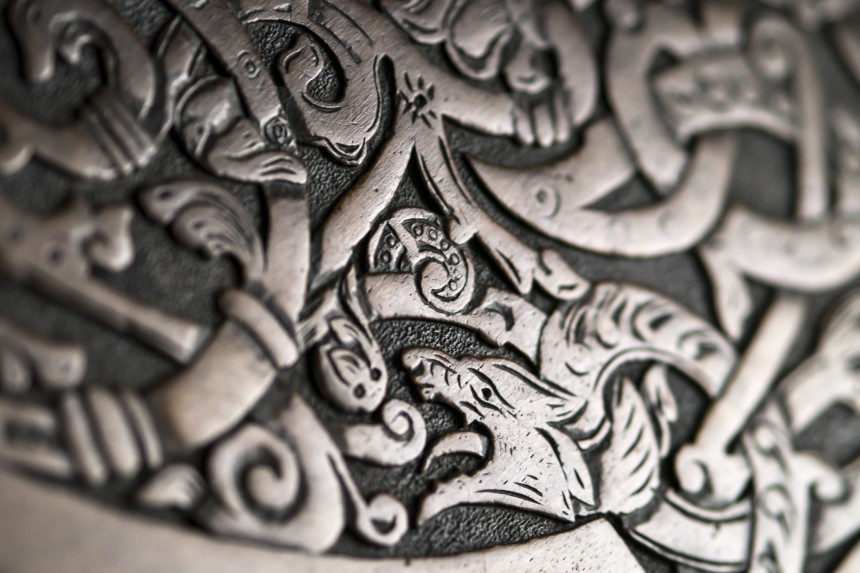Managing editor and logophile Andy Hollandbeck reveals the sometimes surprising roots of common English words and phrases. Remember: Etymology tells us where a word comes from, but not what it means today.
Bluetooth technology is what lets you wirelessly connect your ear buds to your smartphone, your mouse to your laptop, and your electric toothbrush to . . . well, I’m still not sure what Bluetooth-enabled toothbrushes are all about. My point is that Bluetooth technology has become ubiquitous in commercial electronics, and in a very short time — Bluetooth is barely old enough to buy alcohol.
But this isn’t a technology column; it’s a word history column, and how Bluetooth got its name from a Scandinavian king who died more than a millennium before laptop computers became commonplace is a rather interesting story.
Cast your mind back not to the 900s but to the 1990s: Digital technologies were expanding at a quick clip. Microprocessors were getting smaller, cheaper, and more powerful; the internet was being opened to everyone; and consumers were buying up cellphones, desktop computers, laptops, and printers like they were going out of style. But connecting all this technology together meant a lot of wires — wires for the printer, the speakers, the mouse, the keyboard, the headphones, and so on.
Developers knew that wireless devices were the future, and, for a while, each of the electronics manufacturers was working on its own solution. But they realized that could only lead to a fragmented industry. So in December 1996, developers from Intel, Ericsson, and Nokia came together in Lund, Sweden, to develop a single industry standard for short-range wireless digital networks.
Each company brought its own version with its own name: Intel’s was called Business-RF (or Biz-RF), Ericsson’s was MC-Link, and Nokia’s was Low Power-RF. Both for administrative reasons and to simplify conversations about their goal, these collaborators needed a new single name to refer to it all. It didn’t need to be the final name that would be given to the technology, just a short-term codename.
Not long before all of this transpired, Intel’s Jim Kardach and Ericsson’s Sven Mathesson were both in Toronto pitching their respective company’s technology. After they were both rejected, they met at a pub and wound up talking about books. Mathesson had recently read Frans G. Bengtsson’s The Long Ships, an exciting historical novel about Viking adventure in the tenth century. Though the story was fictional, the king in the story was the real Danish King Harald Gormsson.
When Kardach returned home, he discovered that Gwyn Jones’s A History of the Vikings, a book he had ordered before he left for Canada, had arrived. Flipping through it, he found Harald Gormsson again and learned that King Harald had united Denmark and Norway under his rule. (He also Christianized them, but that’s another story.)
Jim Kardach was the Intel representative at the meeting in Sweden, and when they were casting about for a codename for the project, he realized that they were trying to unite cellphone and PC technology in the same way King Harald had united Denmark and Norway (though perhaps with less bloodshed). He suggested they name the project after him, and the others agreed.
So did they name it Harald? Or Gormsson? No — King Harald had a nickname based on a physical feature that was hard not to notice: his rotten tooth. He was known as Harald Blåtand — or in English, Harald Bluetooth — and the project was codenamed “Bluetooth.”
(To be fair, his tooth was probably black or dark gray, not blue. The history of color names and how they have changed is a fascinating topic, but an expansive one that doesn’t lend itself to this small column.)
Though the project had a codename, a marketing group immediately began work on creating a new “official” name that would be used for the final product. As the launch date neared, they had whittled down the possibilities to RadioWire and PAN (for “Personal Area Network”). PAN won by a vote of 4 to 1.
If PAN seems like too common-sounding a word to you, it is, as the marketing folks discovered. Shortly before the launch of their new technology, and after looking into the viability of the name PAN, they realized that it wouldn’t be a good choice. Surprisingly, no one had bothered to do any further research on the second-place RadioWire name — and they were out of time.
So when they launched, they kept the Bluetooth name, still assuming that they would change it later. But people liked it and it stuck, and now we have Bluetooth toothbrushes.
One more fun fact: If you’ve ever tried to make sense of the Bluetooth logo, let me clear it up for you. It isn’t just a stylized B; it’s a combination of the Old Norse runes Hagall and Bjarkan — H and B.

It’s Harald Bluetooth’s initials!
Featured image: Asmus Koefoed / Shutterstock
Become a Saturday Evening Post member and enjoy unlimited access. Subscribe now




Comments
Interesting feature on Bluetooth, even though I don’t use it. At the bottom I can clearly see the ‘B’, but not so much the ‘H’. Regardless, it’s a good looking, distinctive logo that’s very successful.